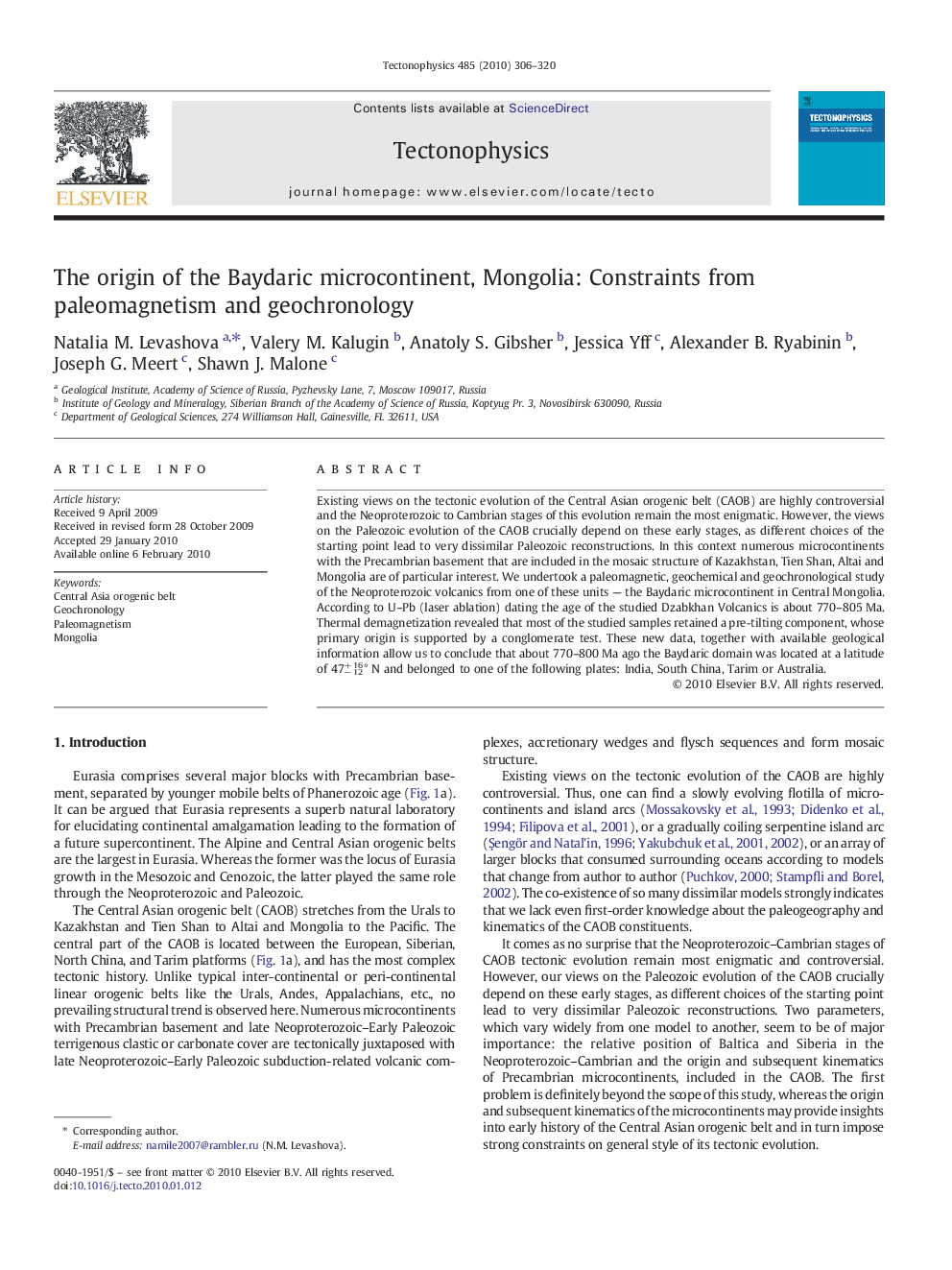| Article ID | Journal | Published Year | Pages | File Type |
|---|---|---|---|---|
| 4693655 | Tectonophysics | 2010 | 15 Pages |
Existing views on the tectonic evolution of the Central Asian orogenic belt (CAOB) are highly controversial and the Neoproterozoic to Cambrian stages of this evolution remain the most enigmatic. However, the views on the Paleozoic evolution of the CAOB crucially depend on these early stages, as different choices of the starting point lead to very dissimilar Paleozoic reconstructions. In this context numerous microcontinents with the Precambrian basement that are included in the mosaic structure of Kazakhstan, Tien Shan, Altai and Mongolia are of particular interest. We undertook a paleomagnetic, geochemical and geochronological study of the Neoproterozoic volcanics from one of these units — the Baydaric microcontinent in Central Mongolia. According to U–Pb (laser ablation) dating the age of the studied Dzabkhan Volcanics is about 770–805 Ma. Thermal demagnetization revealed that most of the studied samples retained a pre-tilting component, whose primary origin is supported by a conglomerate test. These new data, together with available geological information allow us to conclude that about 770–800 Ma ago the Baydaric domain was located at a latitude of 47− 12+ 16° N and belonged to one of the following plates: India, South China, Tarim or Australia.
